5 Signs You Need to Switch Your Staffing Software
December 14, 2015
With so many other business concerns, your staffing software should provide you with a sense of Zen, not a throbbing headache. Sadly, not every platform is going to be ideal for your specific business. That is why we recommend saying adieu to incompatible solutions and making the move to switch your staffing software vendor if they exhibit these five bad signs.
1.) Issues with Mobility
Today’s employees are not tethered to their desktop terminals and your tools should not be either. Account managers and recruiters frequently need to provide on-site support at a client location. Mobile access to all of the regular features of your CRM means your team can enter new orders, review resumes, and correspond with clients on time-sensitive projects.
What about your contractors? Temp workers can more efficiently submit time cards when they can do it from their cell phones. Limitations on either side can considerably slow down the staffing and payment processes. If you switch your staffing software for nothing else, switch for better mobility.
2.) Ineffective Social Media Integration
Red flags should be flying from the start. If staffing software is unable to integrate with major social media platforms, your business will be seriously hindered.
One survey indicates that 59% of recruiters consider social networks to be a source for the highest quality candidates. Having that complication on the front end can seriously unhinge your recruiting team.
3.) Front and Back Office Fail to Integrate
The best staffing software is holistic. For temporary and direct hire placements, back office staffing software deficiencies are a deal breaker. Daily operations become all the more complicated when your contractors’ front office profiles fail to seamlessly integrate with time capture and your general ledger features. Same with direct hire placements.
Billing needs to be a simple process. Payroll, cutting checks, and direct deposit/cash card should be coordinated from one system that services all aspects of the business. When front and back office integrates perfectly, you save on expenses, on productivity, and on the fuss that comes with rectifying two often unamendable programs.
4.) The Software Doesn’t Fit Your Line of Business
Your staffing software is not a one-size-fits-all solution. Your industry affects the modules and features you will need to succeed. If you are placing temporary workers in an industrial environment, you will not need the extra certification features that someone finding talent for a healthcare environment might need. Excess features or a lack of specialized functionality will slow your operations on either end.
Certain software vendors understand that there is no universal solution. The best vendors take care to customize your solution, providing you with modules that fit your line of business. Even if you are running multiple lines of business, your staffing software partner can help segment your solution so each of your individual divisions have exactly what is needed, no pluses or minuses.
5.) Reporting Is Limited
Your company is gathering tons of data, but if you cannot analyze most of it, all that information is as beneficial as treasure sealed in a Pharaoh’s tomb. Your staffing software should not be the lock keeping it beyond reach.
Good reporting systems allow for the analysis of your own custom KPIs in addition to the standard gross margin reporting, client revenue forecasting, and commission reporting. You will know that you are working with an exceptional partner when they are willing to discuss ways to make reporting on your custom KPIs happen.
The Big Reason to Switch Your Staffing Software
Ultimately, your staffing software should offer you the accessibility, features, and integration that you need for your business to perform at its best. Sacrificing your revenue and productivity to stick with a familiar yet inferior tool only damages your business in the long run. Ask for a demo of ours today.


